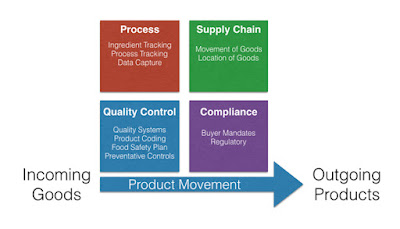COVID-19 is a reminder of how quickly pathogens can spread and the importance of good manufacturing practices to protect your customers and your employees. RCI member, Jim Bourne with Hilliard’s Chocolate Systems shares pro tips for maintaining and cleaning your chocolate equipment.
Today’s food safety regulations regarding sanitation, allergens and labeling are being aggressively enforced at the local, state and federal levels. Keep good records of what cleaning is performed and when it’s done. Inspectors like to see this information recorded.
Equipment Maintenance
By having the chocolate equipment in good operating condition, it will help avoid possible contamination from the equipment and avoid down time. Talk with the machine manufacturer to discuss maintenance, such as lubrication with a food-grade lubricant, replacement of worn parts and wear items such as belt drives.
Create a chart to detail periodic inspections and repairs to the machinery. When a machine is not operating properly or making a new noise, investigate and repair the problem to avoid down time. Developing problems rarely get better on their own. Since cleaning is a big part of maintenance, do periodic break downs of equipment to inspect, clean and locate any issues.
Equipment Cleaning
Scheduling a few minutes each day for daily and periodic cleaning will help equipment run more efficiently and reduce the risk of contaminated product. As a fat-based food, chocolate can be easily compromised by heat, strong odors, allergens and moisture. Fortunately, chocolate has a very low moisture content and low water activity, so it is less likely to support pathogens on its own. The low moisture also means chocolate equipment does not need a complete breakdown and cleaning daily as other equipment does, such as ice cream equipment.
Cleaning methods for eliminating allergens and pathogens in chocolate equipment can be divided into two categories; dry cleaning and wet cleaning. Dry cleaning does not use water, so cleaning is done by scraping chocolate out, vacuuming out solid chocolate bits and wiping down equipment with alcohol wipes. This method is best for machine parts that can be disassembled.
Larger machines are often cleaned intact by flushing the system with melted cocoa butter to access pipes, pumps and hard-to-reach areas. Wet cleaning involves the use of warm to hot water and liquid sanitizers. The water and sanitizer will introduce moisture, so each component being wet cleaned must be completely dry before reassembly. Be sure to use sanitizers that do not have a strong fragrance, otherwise the fragrance can be picked up by the chocolate.
Wet cleaning pipes, pumps and other restricted areas can also be problematic if moisture is introduced in the cleaning process, but not removed. Introducing moisture presents a higher risk of pathogen and mold growth, so it is important that all surfaces that are wet cleaned are completely dry.
Daily Cleaning
At the end of the day, raise the chocolate temperature to break the temper. Run the untempered chocolate through the pumping system and the wire belt, because untempered chocolate is less likely to crystalize overnight. The cooling belts can be cleaned and dried while they are running. Avoid using excessive water and use only damp cleaning cloths, drying afterwards. If the equipment has screens to filter out debris, clean them at least daily. Drain chocolate from the curtain hopper and wire mesh belt into the tank to prevent the chocolate from setting up and causing problems on start up. Clean any non-chocolate materials such as nuts, sea salt and toppings from the machine. Also, clean floors and walls around and under the equipment daily.
Periodic Full Cleaning
Periodic full cleanings are a necessity. You should assess your own situation and risk to determine how frequently to perform a full cleaning. Are you more likely, in your operation, to introduce moisture, allergens or contaminants to the equipment and the chocolate? The more likely you are to be compromised, the more often you should do a complete breakdown, cleaning and drying.
Be aware that moisture or other contaminants can also be introduced by other means. Excessive moisture from centers or toppings can cause issues. HVAC in the plant can poorly filter dust or dehumidify the air. Clean and check the cooling tunnels and air blowers to eliminate condensation and dust problems.
There are operations that do a full break down quarterly, monthly and even weekly, depending on their own situation. Operations that perform very few full cleanings put themselves at the greatest risk. Following good manufacturing processes will help you protect your customers, your employees and your business.
Crave more? If you like what you read here, look for the "Subscribe now" box on the right to enter your email address and start receiving weekly tips, like this, delivered straight to your email inbox. RCI's Tip of the Week blog is just one of the many resources we offer to help candy makers refine their craft and build upon their business and marketing practices.







